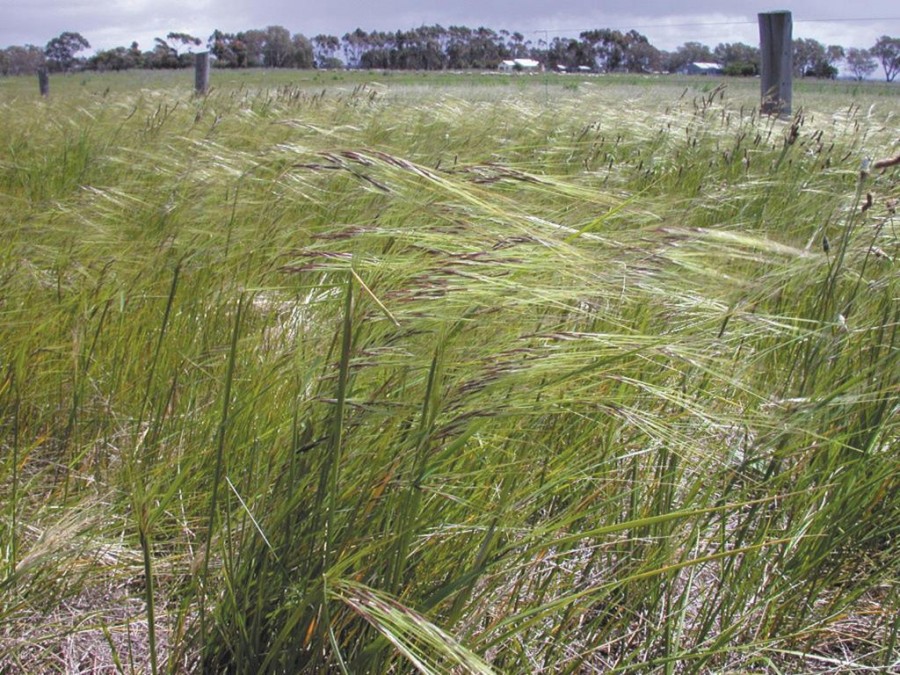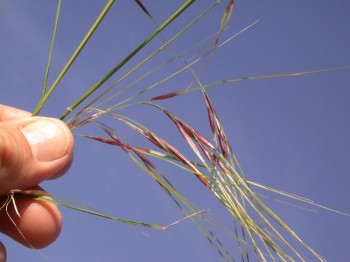WEED WEDNESDAY: Chilean Needle Grass (Nassella neesiana)
25th Jan 2023
WHAT'S THE IMPACT?
Chilean Needle Grass takes over pasture, can halve productivity during summer, injures animals eyes, downgrades wool, pierces hides, can affect meat quality and reduces biodiversity.
The leaves of CNG are flat, coarse or ribbed on the surface, 1-5 mm wide, with a small tuft of hairs at the junction of the leaf blade and leaf sheath. CNG seeds are 8-10 mm long, pale brown when mature, held inside two purple coloured structures 16-25 mm long called glumes and very sharp at the end joining the stem. CNG has a long bristle called an awn attached to the end of the seed further from the stem. The awn is 6-9 cm long, twisted when dry and surrounded by a corona of small teeth at the seed join - corona teeth are 1 mm long.
HOW DOES IT SPREAD?
Animals, vehicles, and machinery spread CNG seeds. The hairs at the sharp end of the seed anchor into in wool or fur. Seeds can stay attached to animals for months. Hay baled from paddocks with CNG may contain seeds. Seed comes from the flowers and along the nodes of the stalks. Seeds can spread in floodwaters, and are only rarely dispersed by wind.





